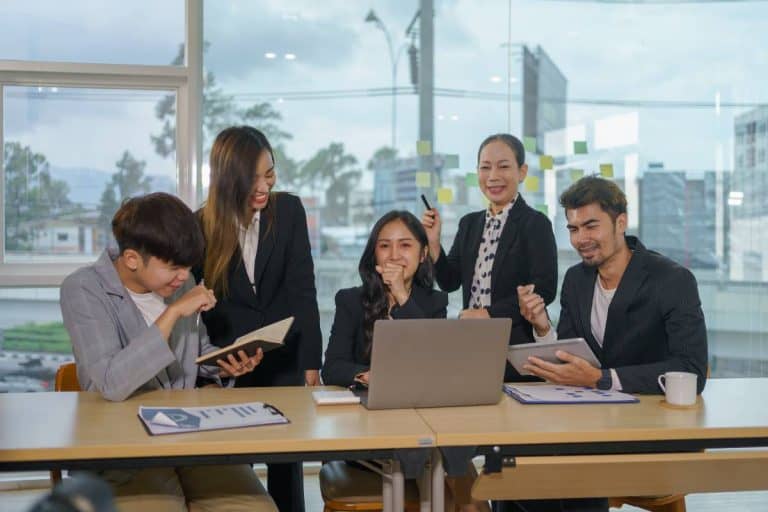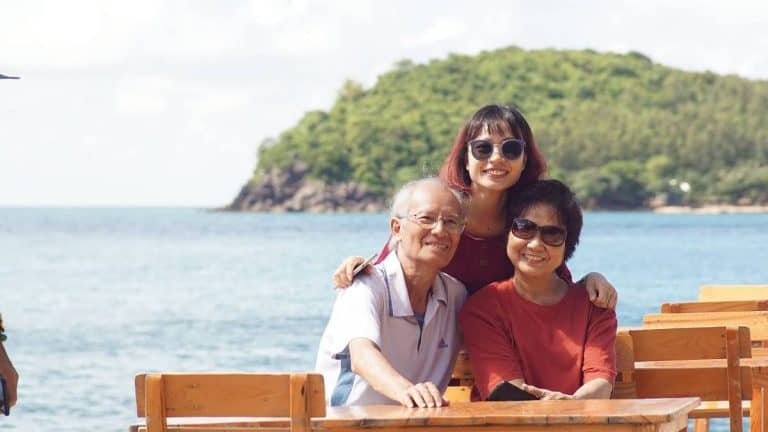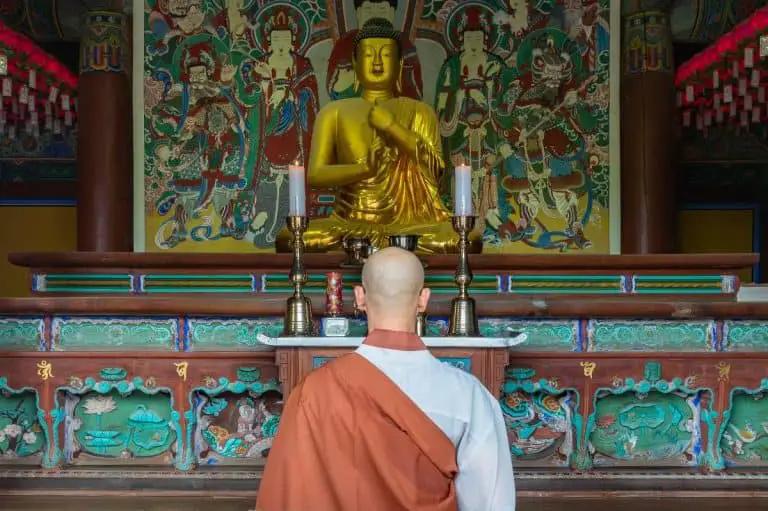Urban Legends in Thailand: What Every Expat Should Know
Thailand is a land of stunning beauty, rich traditions, and fascinating history. But beneath its picturesque landscapes and vibrant culture lies a world of mysterious tales and urban legends that have been passed down through generations. For expats living in Thailand, understanding these local myths and legends can provide deeper insight into Thai culture and beliefs. In this article, we explore some of the most intriguing urban legends in Thailand that every expat should know about.
Key Takeaways
- Thai urban legends reflect deep-rooted animistic beliefs intertwined with Buddhism, influencing daily rituals and perspectives on the supernatural.
- Stories like Phi Pop and Mae Nak offer cultural insights into fears, values, and historical events, shaping local understanding.
- Respecting these beliefs, even without fully understanding them, is key to navigating Thai culture and building positive relationships.
Table of Contents
The Supernatural Side of the Land of Smiles
Thailand’s spiritual landscape is as diverse as its physical one. Buddhism may be the predominant religion, but animistic beliefs and folklore run deep in Thai society. Many Thais believe in the existence of spirits, ghosts, and supernatural entities that influence daily life. As an expat, you might notice spirit houses outside homes and businesses, offerings left at trees, and various rituals performed to appease these unseen forces.
Phi Pop: The Organ-Eating Ghost
Among the most feared spirits in Thai folklore is the Phi Pop, a malevolent ghost believed to possess people and feed on their internal organs. According to legend, a person possessed by Phi Pop may appear normal during the day but transforms at night, leaving their body to hunt for victims.
Stories of Phi Pop are particularly prevalent in northeastern Thailand, where villagers sometimes identify certain community members as harboring this spirit. For expats, it’s worth noting that accusations of being a Phi Pop carrier have historically led to social ostracism and even village expulsions in rural areas.
Mae Nak Phra Khanong: Thailand’s Most Famous Ghost
Perhaps Thailand’s most well-known ghost story is that of Mae Nak Phra Khanong. This legend centers around a woman named Nak who died in childbirth while her husband Mak was away at war. When Mak returned, he found Nak and their baby waiting at home, unaware they were both ghosts.
The story goes that Nak’s love was so strong that she refused to pass on, instead creating an illusion that she and their child were still alive. When neighbors tried to warn Mak about his ghostly wife, Nak exacted revenge on them. Eventually, Mak discovered the truth when he saw Nak’s arm unnaturally stretch to retrieve a fallen lime from beneath their elevated house.
This legend has been adapted into numerous films, TV shows, and plays, demonstrating its cultural significance. In Bangkok, you can visit Wat Mahabut, the temple where Mae Nak’s shrine stands, where people leave offerings of toys, cosmetics, and clothing to appease her spirit.
Haunted Places and Mysterious Locations
Sathorn Unique Tower: The Ghost Skyscraper
Standing abandoned in Bangkok’s skyline, the Sathorn Unique Tower (also known as the Ghost Tower) is a 49-story skyscraper that remains unfinished following the 1997 Asian Financial Crisis. Urban legends claim the building is haunted by the spirits of workers who died during its construction and suicide victims drawn to its empty heights.
While officially off-limits to the public, the tower has become infamous among urban explorers. As an expat, it’s important to know that trespassing is illegal and dangerous. Many locals avoid even walking near the tower after dark, believing that spirits may follow them home.
Phi Tai Hong: Spirits of Violent Deaths
Thai belief holds that those who die suddenly or violently (Phi Tai Hong) may become restless spirits. This is why you might notice Thai drivers honking when passing accident sites—a gesture meant to alert spirits and avoid bringing them along for the ride.
Locations associated with tragic events, such as the former Tsunami Ghost Village in Khao Lak, are believed to be haunted by victims of the 2004 disaster. Some expats living near these areas report unusual occurrences, from mysterious sounds to unexplained power outages.
Creatures and Cryptids of Thai Folklore
Naga: The Serpent Guardians of the Mekong
The Naga are mythical serpent-like creatures believed to inhabit the Mekong River. According to legend, these powerful beings can transform into human form and control weather and water. Each year, thousands gather to witness the “Naga Fireballs,” unexplained glowing orbs that rise from the Mekong River in October.
Scientists have proposed various explanations for this phenomenon, from flammable gases to optical illusions, but many locals insist they are the work of the Naga. For expats living near the Mekong in provinces like Nong Khai, experiencing this festival provides a fascinating glimpse into how ancient beliefs continue to thrive alongside modern life.
Krasue: The Flying Head
One of Thailand’s most distinctive supernatural entities is the Krasue—a floating female head with internal organs dangling beneath it. According to folklore, the Krasue is a woman who practiced black magic or was cursed, causing her head to separate from her body at night to hunt for food.
The Krasue is said to feed on blood, raw meat, and even feces, leaving telltale viscous trails that villagers once blamed for unexplained livestock deaths or contaminated clothing left outside overnight. Even today, some rural Thais avoid hanging laundry outside after dark for fear of attracting this entity.

Protective Talismans and Good Luck Charms
Sak Yant: Sacred Tattoos
Sak Yant tattoos are geometric designs, Buddhist prayers, and mythical creatures tattooed by monks or ajarn (masters) using traditional methods. These aren’t merely decorative—they’re believed to offer protection, good fortune, and other benefits depending on the design.
Many expats have embraced this tradition, receiving tattoos like the Hah Taew (Five Lines) for protection or the Gao Yord (Nine Spires) for all-around good fortune. However, these tattoos traditionally come with certain rules or taboos that the wearer must follow to maintain their power.
Palad Khik: The Peculiar Phallic Amulet
Visitors to Thailand are often surprised to encounter palad khik, phallic-shaped amulets worn as necklaces or kept in businesses. Despite initial assumptions, these aren’t sexually oriented but rather symbols of fertility and prosperity derived from ancient animistic beliefs.
For expats running businesses in Thailand, understanding that these objects are considered sacred rather than obscene can prevent cultural misunderstandings. Some Thai-owned establishments still place these amulets in cash registers or near entrances to attract customers and wealth.
Modern Urban Legends
The Curse of Thai Airways Flight 365
In 1992, Thai Airways Flight 365 crashed near Kathmandu, killing all 113 people aboard. Following the tragedy, stories circulated that the spirits of those who died continued to board subsequent flights using their original ticket numbers.
Flight attendants reportedly noticed passengers who would board but mysteriously disappear during the flight. This led to the airline supposedly retiring those ticket numbers and performing blessing ceremonies before flights. While Thai Airways denies these stories, the legend persists and has become part of Thailand’s contemporary folklore.
The Mall Ghost
Shopping malls are central to urban Thai life, so it’s perhaps unsurprising that they feature in modern ghost stories. One persistent tale involves security camera footage allegedly capturing a female ghost wandering through department stores after closing hours.
These stories gained traction in the early 2000s with the circulation of grainy CCTV images supposedly from Central World and other major Bangkok malls. Though debunked as hoaxes, many mall security guards still report uneasy feelings during night shifts, and some refuse certain patrol routes through reportedly haunted sections.
About Us at Better Living Asia
At Better Living Asia, we’re a team of long-term expats and local experts dedicated to making your transition to life in Thailand as smooth and enriching as possible. Our diverse team brings together decades of combined experience living, working, and traveling throughout Southeast Asia.
Founded in 2018, our platform began as a simple blog sharing practical advice for newcomers to Bangkok but has since grown into a comprehensive resource for expats across Thailand and beyond. Our writers and contributors include former corporate executives who traded skyscrapers for beach views, educators teaching at international schools, digital nomads embracing Thailand’s growing remote work scene, and Thai nationals offering authentic local perspectives.
We believe that understanding local culture—including its myths and legends—is essential to truly appreciating your expat experience. Our articles aim to bridge cultural gaps and provide insights that guidebooks often miss, helping you navigate both the practical and mystical aspects of your new home.
FAQs
Are these urban legends taken seriously by modern Thais?
While education and urbanization have certainly influenced beliefs, many Thais—even well-educated professionals—maintain respect for traditional supernatural beliefs. You’ll find that most Thais take a “better safe than sorry” approach, performing small rituals or showing respect to spirits regardless of their personal conviction level. As an expat, showing respect for these beliefs (even if you don’t share them) is appreciated.
Should I be concerned about offending spirits while in Thailand?
Respectful behavior is always advised. Simple courtesies like removing shoes before entering temples, homes, or spirit houses, and not pointing feet at Buddha images or spirit houses demonstrate cultural sensitivity. If visiting reportedly haunted locations, maintain a respectful demeanor and ask permission before taking photos or entering sacred spaces.
What should I do if I encounter a Thai spirit house?
Spirit houses (san phra phum) are small shrine-like structures found outside homes and businesses. When passing particularly elaborate ones, you might see Thais performing a wai (pressing palms together in a prayer-like gesture). While not expected of foreigners, this gesture shows respect. Never touch or remove offerings left at spirit houses.
Do expats ever report supernatural experiences in Thailand?
Many long-term expats share stories of unexplained experiences, particularly those living in older buildings or rural areas. These range from hearing footsteps in empty rooms to seeing apparitions in peripheral vision. Whether these are truly supernatural or simply the product of cultural immersion influencing perception is debatable.
How can I learn more about Thai folklore and urban legends?
Visiting local temples often provides insight into Thai spiritual beliefs. Temples like Wat Mahabut (Mae Nak’s shrine) include explanatory signs in English. Additionally, cultural centers in major cities frequently offer exhibitions on Thai folklore. For those interested in deeper exploration, annual festivals like Phi Ta Khon (Ghost Festival) in Dan Sai or the Naga Fireball viewings in Nong Khai offer immersive experiences.
Conclusion
Thailand’s urban legends offer fascinating glimpses into the country’s cultural psyche and spiritual beliefs. For expats, understanding these stories provides more than just entertaining anecdotes—they offer valuable insights into Thai perspectives on life, death, fortune, and the supernatural forces believed to influence daily existence.
While you might never encounter a Krasue or witness the ghost of Mae Nak, awareness of these beliefs helps explain many practices you’ll observe in your Thai neighbors and colleagues. From small daily rituals to major festivals, the influence of these legends permeates Thai society in subtle but meaningful ways.
As you continue your expat journey in Thailand, approaching these beliefs with curiosity and respect rather than dismissal will enrich your experience and deepen your connection to your adopted home. After all, in a land where ancient spirits are believed to coexist with modern skyscrapers, keeping an open mind might just be your best protection.






